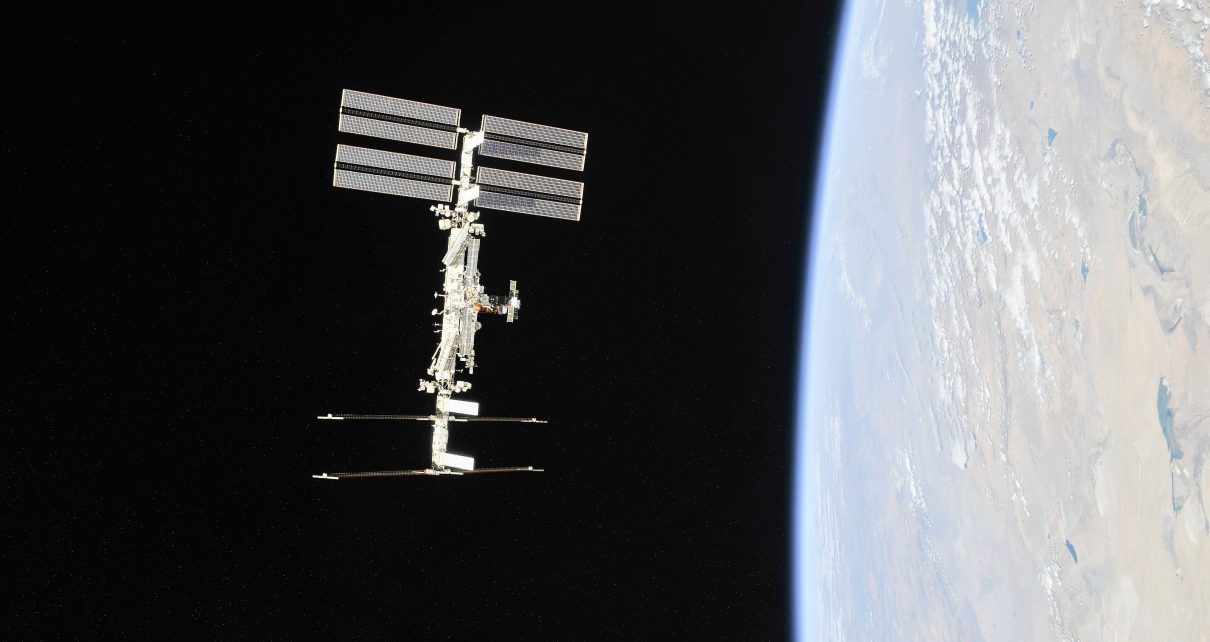For 25 years, physicists have used an exotic state of matter made from ultracold atoms to probe quantum behaviour at the macroscopic scale. Now, they can do it in space.
The feat—the creation of a Bose–Einstein condensate—comes from physicists behind NASA’s US$100-million Cold Atom Lab, which began operating on the International Space Station in June 2018. The results are a proof-of-principle showing that the laboratory can successfully exploit the microgravity of space in ways that should allow scientists to create phenomena that would be impossible on Earth. The facility is on track to become the coldest place in the known Universe.
“I think it’s just an amazing achievement,” says Courtney Lannert, a theoretical physicist at Smith College in Northampton, Massachusetts. The findings were published1 in Nature on 11 June.
Exotic behaviour
First created in 1995, Bose–Einstein condensates form when clouds of atoms are chilled to just above absolute zero. At this temperature, the particles’ wave-like quantum nature dominates, and they coalesce into a single macroscopic quantum object, which physicists can use to investigate exotic behaviour.
On Earth, gravity limits studies on these clouds because they quickly disperse unless gravity’s effects are counteracted with strong magnetic fields. But in microgravity, the condensates last longer, allowing for more precise studies. And because weak magnetic ‘traps’ for the atoms can be used in space, physicists can chill them to even lower temperatures, in part by harnessing a technique that cools condensates by allowing them to expand. “Most quantum physicists would say cold-atom experiments are cool, but to make them cooler you have to take them to space,” says Kamal Oudrhiri, CAL mission manager at the Jet Propulsion Laboratory in Pasadena, California.
The researchers used CAL’s precise lasers and high vacuum to produce condensates that lived for longer than a second at 200 trillionths of a degree above absolute zero, on par with some of the most successful experiments on Earth. In future experiments, the team plans to go down to a record 20 trillionths of a degree and create condensates that last for 5 seconds, says Oudrhiri. That would make it the coldest place in the known Universe.
Dishwasher-sized lab
The condensate isn’t the first produced in space. Experiments on rockets that temporarily cross the barrier into space—as well as those using drop towers on Earth—have provided indications of how this phase of matter behaves in microgravity. But CAL is the first lab of its kind to exist in this environment permanently, says Maren Mossman, a physicist at Washington State University in Pullman, and could be just the first of a series of space-based cold-atom labs. Its success was not a given, she says; CAL puts kit that typically fills an entire lab into a space the size of a dishwasher.
And these are just the first results to come from the lab. Mossman is part of a team that is using CAL to create Efimov states, groups of particles that bind in threes but not twos and have long fascinated physicists.
Other teams have also started experiments to create phenomena possible only in the ISS environment. Lannert’s team, for example, has begun producing 30-micrometre-wide bubbles of condensate. Under Earth’s gravity, these would collect to form a bowl or pancake shape. The features of bubbles—being thin and edgeless—mean that they should create whirlpools, known as vortices, with novel behaviours, she says. “The shape is not possible unless you remove the force of gravity. So far, it’s looking really good in terms of the trap doing what we expect it to do.”
‘Heart surgery’ in space
Already the most complex experiment ever on the ISS, the facility got a mind-bending upgrade in January. Over eight days, NASA astronauts Christina Koch and Jessica Meir installed an atom interferometer, a process Oudrhiri likens to performing heart surgery in space. The interferometer splits a cloud into two quantum states—with each atom effectively existing in two places at once—before reuniting them to produce an interference pattern. This pattern acts as a sensitive gauge of forces around the condensate, which physicists can use to test fundamental laws of nature or to search for dark energy. Tests in May—when the coronavirus lockdown meant that the remotely operated CAL was the United States’ only operational cold-atom lab—show that the atom interferometer is working as planned, says Oudrhiri.
The compact nature of CAL meant that compromises had to be made in its abilities, and it is not ideal for every experiment because it suits the needs of multiple projects, says Lannert. “But the trade-off is more than worth it,” she adds. It also allows physicists without their own extensive labs to perform these experiments. “We’re at a small liberal-arts college, and being able to take data on this machine is just super exciting.”
This article is reproduced with permission and was first published on June 11 2020.




